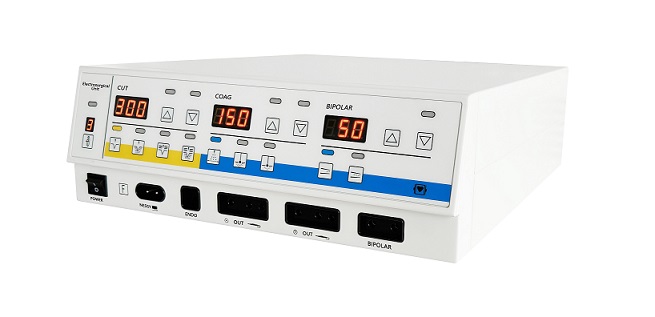Electrosurgical Unit for Tonsillectomy Injury
Electrosurgical Unit for Tonsillectomy Injury
The tonsils are rich in blood vessels and wounds are prone to bleeding. More and more doctors choose thermal cutting instruments such as plasma, carbon dioxide laser, and ultrasound knife for surgery. Low temperature plasma knife is a highly regarded instrument with a working temperature of only 40-70 ℃, and it also has the functions of cutting, hemostasis, and ablation. However, this device is expensive and prone to wear and tear, which increases the economic burden on patients and limits its promotion in basic hospitals and economically underdeveloped areas.
Electrosurgical Unit have the characteristics of high popularity of instruments, reusability, and low cost. The working modes of elelctrosurgical unit mainly include electric cutting mode, electric coagulation mode, and hybrid mode. The peak voltage of electrocoagulation mode is larger than that of electrocautery mode, and the range of electric spark action is wider, producing good hemostatic effect, but thermal damage is greater than that of electrocautery mode. The tonsil tissue is mainly composed of epithelial cells and lymphoid tissue, with abundant capillaries and few fiber components inside. Therefore, the electrocoagulation mode can not only meet the cutting requirements of tonsil tissue, but also effectively seal capillaries. Compared with the electrocoagulation mode, it is easier to create a clean and bloodless surgery, and can efficiently complete the surgery in a zero bleeding state like a plasma esu.
Compared to low-temperature plasma esu, the instantaneous temperature of esu can reach over 150 ℃, and theoretically, thermal damage will be higher than that of plasma esu. However, in total tonsillectomy, the average thermal damage depth of esu and plasma esu is 0.6mm and 0.8mm. The reported data is 0.85mm for esu and 0.43mm for plasma ESU, with little difference between the two. In the early stage, esu (coagulation mode, 15-18W) and plasma esu (cutting range 6-7, hemostasis range 3-4) were used for adult total tonsillectomy, and the measured data were 0.52mm and 1.32mm, respectively. The thermal damage of esu was actually lower than that of plasma esu. But total resection separates in the loose fibrous space between the tonsil capsule and the pharyngeal constrictor muscle, while partial resection directly cuts inside the substantial glandular tissue. Therefore, whether it is a esu or a plasma esu, partial resection will cause greater thermal damage to glandular tissue than total resection.
The thermal damage generated by high-frequency electrocoagulation mode is slightly higher than that of electrocautery mode, and both electrocoagulation mode and electrocautery mode generate thermal damage within the range of 20-25 watts. Surprisingly, the two modes showed higher thermal damage at 15w, which may be due to low power, difficult cutting, and increased contact time between the esu and the tonsils. It is difficult to cut glandular tissue with a power of 15W, while a power of over 20W can basically meet the cutting requirements. In summary, it is believed that using high-frequency electrocoagulation mode with a power of around 25 watts is suitable for partial tonsillectomy surgery.





